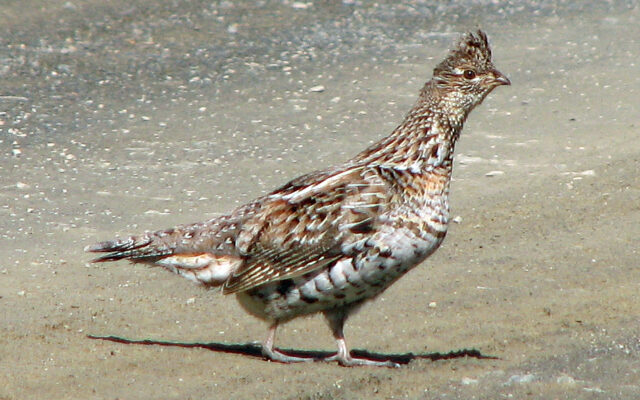
How to tell the difference between a ruffed grouse and a spruce grouse
By Pete Warner, Bangor Daily News Staff
Spending a crisp morning pursuing ruffed grouse is among the highlights of the fall season for Maine bird hunters.
Ruffed grouse, which in Maine are often referred to as partridge, can be found across the state.
The upland bird hunting season begins with “cast-and-blast” weekend: Bird hunting season opens on Saturday, followed by a day of fishing on Sunday, leading into the first full week of the hunting campaign.
The first week of Maine’s annual moose hunt begins on Monday, Sept. 27.
If you’re new to ruffed grouse hunting, or if you have limited experience with them, there are a few things you should know.
The law requires hunters to identify their target before pulling the trigger.
That means hunters must be able to distinguish a ruffed grouse from a spruce grouse. It is illegal to shoot spruce grouse, which are considered rare in some parts of the state.
That said, telling the two birds apart can be tricky at times.
Male spruce grouse are the easiest to identify. They are slate gray and black and feature an unfeathered patch of red skin above the eye.
If you see the red area, it’s a spruce grouse. They also have tail feathers with red-brown tips that lack the broad, black band seen on the tails of ruffed grouse.
Female spruce grouse are gray and brown above and white and brown below. The Maine Department of Inland Fisheries and Wildlife said they may resemble the red phase of ruffed grouse in some light conditions.
Ruffed grouse, on the other hand, are characterized by the black tail band. They also have black ruff feathers on the side of the neck and other small feathers that stick up from the top of the head.
If a male ruffed grouse and male spruce grouse were standing side by side, you likely would be able to tell them apart. But when seen individually, it’s not always easy.
Both species can be found in the same areas, so if you can’t tell them apart visually, their behavior can provide other important clues.
When approached, ruffed grouse often will pop up their head like a chicken. They’re also much more likely to fly away when approached. Other times, they may lower their head with the neck extended and run for the nearest cover.
Spruce grouse tend to exhibit a more tame demeanor and might even let a hunter on foot or a vehicle get within a few feet before reacting. They also may crouch low to the ground when approached.
Even when they do react to a hunter or vehicle, spruce grouse might only go a short distance, or fly up into the nearest tree. They’re much more likely to be hanging out near fir trees, as opposed to hardwood cover.
If you’re not sure whether you’re looking at a ruffed grouse or a spruce grouse, consider their markings, their behavior and the surrounding habitat.
More black feathers, a red patch near the eye and minimal reaction to the presence of a hunter or vehicle probably means you’re looking at a spruce grouse.
If you see brown body feathers, a noticeable black band on the tail and short feathers sticking up from the top of the head, it’s a ruffed grouse.
The more birds you see while in the field, the better you’ll get at properly identifying them — and avoid having to explain to a game warden why you have a spruce grouse in the back of the truck.